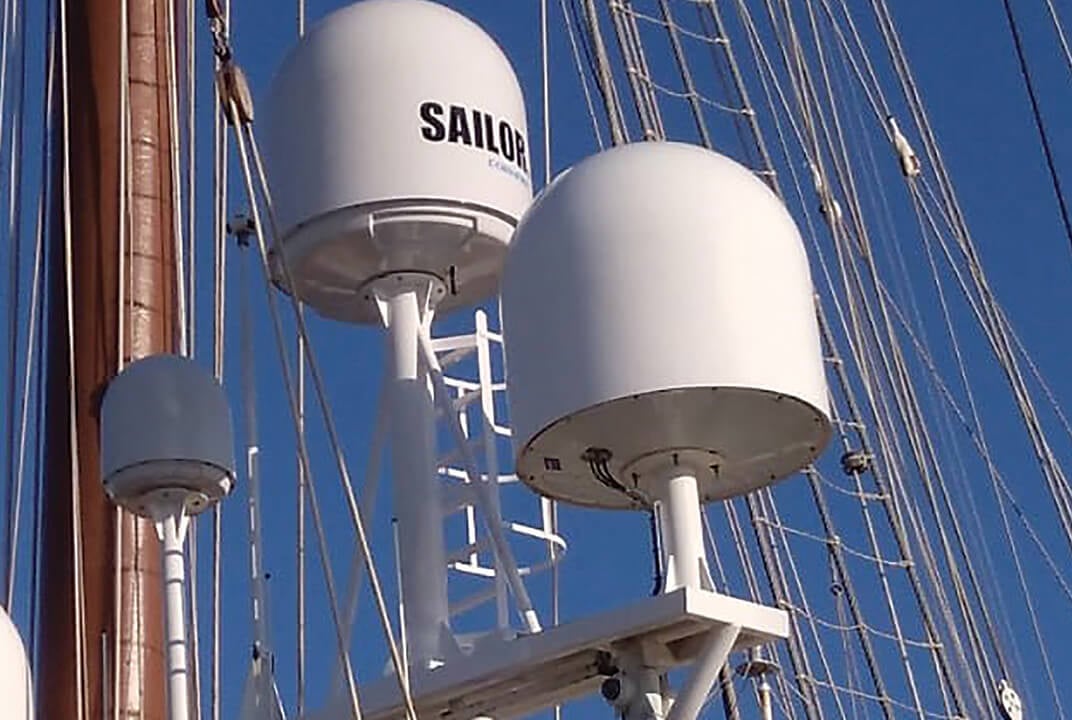Insight | A new frontier for government users
A new frontier for government users
Government
Planned Arctic region payloads demonstrate our commitment to seamless global connectivity, says Rebecca Cowen-Hirsch.
In today’s geopolitical and economic environments, demand for Arctic connectivity is growing. Nations have increased their activities in the Arctic region – whether exploration/research, commerce, defence manoeuvres or patrols – and it is critical that U.S. government mission operators have reliable access to satellite communications (SATCOM) capabilities in these high-priority northern latitudes.
According to the 2019 Department of Defense (DoD) Arctic Strategy report to Congress: “The diminishment of Arctic sea ice has led to increased human activities in the Arctic, and has heightened interest in, and concerns about, the region’s future. Issues such as Arctic territorial disputes; commercial shipping through the Arctic; Arctic oil, gas, and mineral exploration; endangered Arctic species; and increased military operations in the Arctic could cause the region in coming years to become an arena of international cooperation, tension, or competition.”
The region does, however, present operational challenges due to its harsh climate, vast area and atmospheric phenomena. In response to these challenges, Inmarsat is strategically developing Geosynchronous Orbit (GEO) as well as Molniya Orbit commercial and mil-Ka satellite communication assets to address the growing commercial and government needs for seamless operations within, to and from the Arctic. Teamed with Space Norway, Inmarsat is expanding its Global Xpress wideband service across the Arctic via two new satellite payloads, GX10A & 10B, hosted on board Space Norway satellites, scheduled to launch in 2022.
Together these payloads and the associated ground infrastructure represent the world’s first and only mobile wideband payloads dedicated to the Arctic. Thus, with the launch, Inmarsat once again leads the industry in developing ground-breaking technology innovation to anticipate and match accelerating demand for seamless government mobile connectivity, anywhere around the world. The payloads will provide continuous, assured and interoperable Global Xpress service to tactical and protected tactical government operations in the Arctic region. They will be placed into Highly Elliptical Orbits (HEO), ensuring continuous coverage above 65º North, and will have the ability to direct capacity to the areas of highest demand in real time.
Building on Inmarsat’s current operational Global Xpress capabilities up to and beyond the 75th parallel North, the payloads will improve network performance by providing Global Xpress users access to services at a very high latitude and with much higher elevation angles to enhance available forward and return throughput. The services offered will be fully compatible with current and future Global Xpress terminals, so that existing and new U.S. government customers will benefit from the further extension and advances of the Global Xpress network. The payloads will bring dynamic connectivity benefits to military users, including high-capacity steerable beams which complement government-owned satellite resources in a cost-effective manner, adding resilience and improving protection, scalability and global portability.
Inmarsat is the only commercial partner to be included as part of Space Norway’s Arctic Satellite Broadband Mission (ABSM) satellites, built by Northrop Grumman. Each satellite will be equipped with payloads for Inmarsat, the Norwegian Ministry of Defence, and the U.S. Air Force. To a large degree, Inmarsat’s presence here is due to the excellent relationship with Space Norway – and the nation of Norway – which spans many years. One of Inmarsat’s most advanced maritime research and development centres is located at the Norwegian Maritime Competence Centre (NMCC) in Ålesund.
It is worth noting that, while functioning as a HEO constellation instead of the GEO orbit used by all other Inmarsat satellites, government customers will be able to travel to and from the Arctic region unaware that they are passing from one satellite or orbit to another. This is because the user terminals, satellites and payloads will be fully and seamlessly integrated into the entire Global Xpress network.
At Inmarsat, we recognise that our government users are conducting mission-critical operations in the Arctic now more than ever. We take a strategic approach to ensure that we always stay ahead of where our customers are going and what they demand from us. We plan to proceed at this enhanced pace of innovation to maintain our standing as an industry-leading pioneer and trusted government partner. If such commitment and results are of interest, then please contact Inmarsat.
About the author
Rebecca M. Cowen-Hirsch is Senior Vice President for Government Strategy and Policy for Inmarsat Government, based in Washington. Rebecca brings 25 years of defence, aerospace, and executive leadership experience to Inmarsat. As a decorated member of the Senior Executive Service (SES) in the U.S. Department of Defense, she served as the Program Executive Officer for SATCOM, Teleport and Services at the Defense Information Systems Agency (DISA) and in several key SES executive positions including the first Vice Component Acquisition Executive for DISA, with executive management responsibility for the acquisition oversight and horizontal integration of DISA’s products, services, and programs. Rebecca established the Defense Spectrum Office, serving as its first Director where her responsibilities included the development of national security spectrum strategic plans and policy, and national and international negotiation of defense spectrum issues. Her broad defense career ranged from systems engineering, experimental flight test, program management, spectrum management, and a wide range of executive leadership positions. Rebecca was a rated experimental flight test engineer; was the first female civilian Mission Commander for the Advanced Range Instrumentation Aircraft (ARIA) mission; and was the recipient of an Exemplary Service Medal for her years of selfless service to the Department of Defense.


